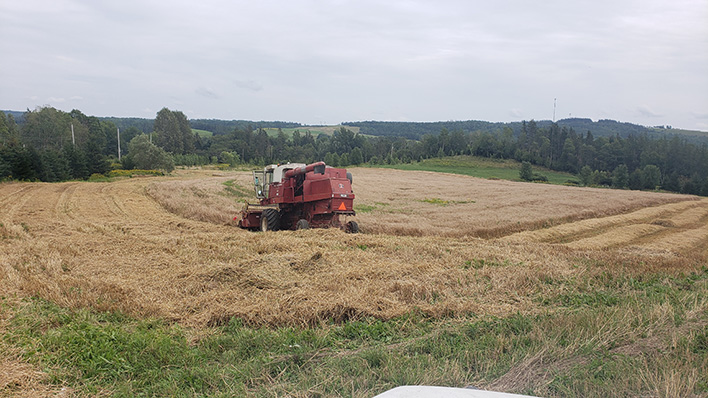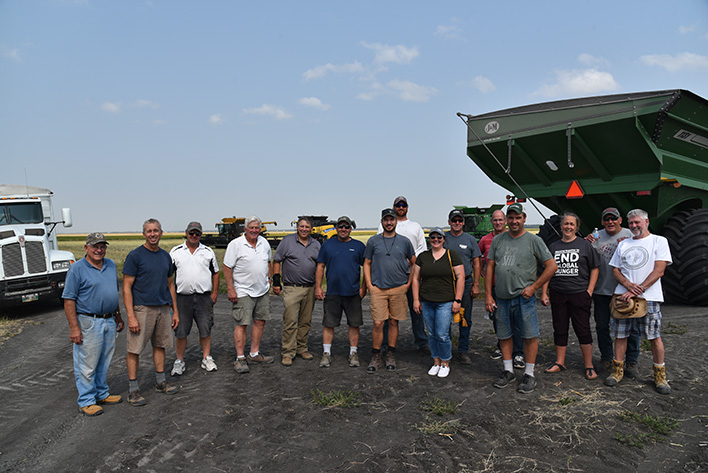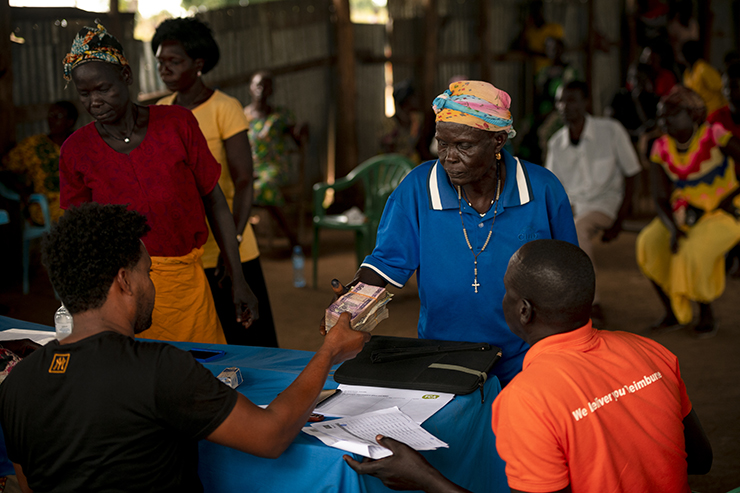“You can’t make a silk purse out of a sow’s ear.”
Those were the words of a Sask Crop Insurance Corp (SCIC) agrologist to Fiske Community growing project secretary and treasurer Carolyn Siemens upon inspection of the drought-ridden Fiske Community growing project in Saskatchewan this past summer.
“Like all farmers, we started the year with enthusiasm and hope, as every other year,” she says, noting that spring rains meant the crop looked acceptable into mid-June, but “prolonged lack of moisture and 30 degree temperatures took their toll and we realized it wasn’t going to be a crop worth harvesting.”
“I don’t know how farmers back in the 1930s did it for 10 years,” adds Carolyn. Thankfully, the project had invested in crop insurance, which is why they had SCIC out at the field and were able to receive a crop insurance payout. With all crop inputs, labour and equipment being donated, the project will be able to donate the crop insurance proceeds to the Foodgrains Bank.
But why stop there? The Saskatchewan Ministry of Agriculture changed their requirements for how farmers could collect crop insurance in order to support livestock producers, whose animals were suffering due to lack of pasture and forage. The growing project members decided to auction off the standing (salvageable) crop to a local cattle producer.
“Not quite a silk purse,” says Carolyn, noting for 2021 that farmers in the Fiske area were ‘living in next year country’ for some time. “But still helping to work toward a world without hunger and feeding a few cows in the meantime.”
Average crops, but skyhigh prices in Central Alberta
In Alberta, many projects were able to fare better than in Manitoba and Saskatchewan, but crop quality overall was nothing to sing about due to lack of rain. “I think we’re hoping for an average crop, but we’re not totally parched,” says Doug Maas of the Central Alberta growing project in LaCombe County.
“We have a wonderful group of farmers throughout the county that no matter where our field is each year (and we move our field to a different location each year) we always get tremendous support from the farmers in that area. They do our spring work and then of course our fall harvesting work as well.”
A harvest of sunflower selfies in Manitoba
Many Manitoban farmers suffered from the same drought conditions as their Saskatchewan counterparts. It wasn’t all negative, though. Farmer Dean Toews of MacGregor, Manitoba, coordinator of the FOCUS project, planted 45 acres of sunflowers, put out a donation box, and then invited Manitobans to stop by for a selfie in return for a donation to help end global hunger. “It’s a nice big, bright yellow plant, and I don’t think you can help but smile when you’re in a sunflower field. So it’s definitely a positive place to be. And that’s what people need,” he said.

Members of the CHIP-In growing project in Glenlea, Manitoba, with representatives from G3 and Canadian Foodgrains Bank, on harvest day. (Photo: Submitted)
A ‘phenomenal’ year for some Ontario growing projects
Growing projects out east didn’t face the same challenges their western counterparts did. “It’s like farming right, no two years are the same, and as farmers we really sympathise with the struggles out west and I guess it’s a little reflective of other places in the world where there’s crop failures and food shortages,” says Kevin Eisses, who chairs Loaves and Fishes project in Simcoe County.
“It’s interesting that even in Canada it can be a reflection of the world in our own country.” The Caradoc project near Strathroy is one project that experienced a record year. “This year the wheat has been phenomenal – record years for both us and almost everybody around. The only issue later in the season was sprouts because it kept being wet—wet and hot,” says project chairman Richard Bolton.
Atlantic provinces
In Nova Scotia, volunteer regional representative Ian MacHattie had only positive things to say about the growing season for the province’s three projects— despite frantically trying to fix a combine that broke down halfway through combining 40 acres of barley for Grow Hope Nova Scotia before rain set in. “There’s been great rain, a great planting season and now extremely high prices.”

Cassie the combine combining barley on the Grow Hope Nova Scotia field in late August. (Photo: Ian MacHattie)
Follow along with how harvest season is going across Canada by connecting with us on Facebook!
Written by Amanda Thorsteinsson, Senior Communications Officer and Laura Brookes, Digital Communications Officer.
This story was featured in the Fall 2021 Breaking Bread. Download or order your copy here.




